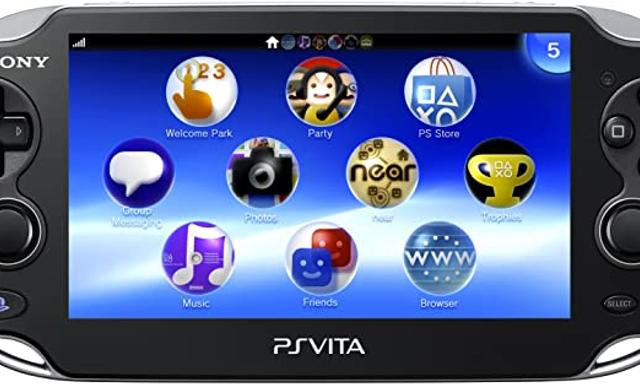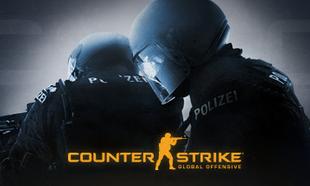February 2012 saw the release of the PlayStation Vita in Europe, and now 10 years later we're looking back at Sony's flawed opus.
On paper, the PlayStation Vita seemed like a slam dunk for Sony - console-quality graphics in the palm of your hand is a device that sells itself.
In the context of the gaming landscape in 2012, it seemed like a sure-fire winner.
Mobile gaming was at its zenith, with the likes of 'Angry Birds', 'Infinity Blade', 'Fruit Ninja' and 'Temple Run' introducing millions of people to the concept of gaming on the go.
With the pedigree of Sony behind it and their 2005 PlayStation Portable ending up as a solid seller for the Japanese titans, an HD upgrade for the iPhone generation was an out-of-the-box hit in theory.
Despite the technology being perfected and an inherent appetite for something new among the populace, things never quite clicked for the PlayStation Vita.
A decade after the fact, we investigate why.
Uncharted Waters
The launch line-up for the PlayStation Vita in Europe was pretty solid.
A bevvy of first-party titles such as 'Uncharted: Golden Abyss', 'Wipeout 2048', 'Motorstorm RC', 'Gravity Rush', and 'Unit 13', told consumers straight away what Sony expected their console to be: bite-size console experiences on the go.
Later in 2012, blockbuster titles from the 'Call Of Duty' and 'Assassin's Creed' series' would launch, so if consumers weren't particularly enthralled by the launch line-up, there was the promise of blockbuster titles down the line.
Add in third-party titles such as 'FIFA', 'Rayman Origins', 'F1 2011', 'Ultimate Marvel Versus Capcom 3', and a 'Lumines' game, and the PlayStation Vita had a pretty decent roster of titles available at launch.
Then-Sony executive Michael Denny was bullish, hailing the launch line-up as "one of the best launch line ups of any games console ever launched."
Consumers didn't agree.
The PlayStation Vita launched before Christmas in 2011, and the early sales reports weren't exactly glowing.
Sony's new machine sold 300,000 units in its first week, but that was followed by a 78% drop in sales the following week.
By January 2012, the PSP was outselling the Vita in Japan, despite having been available since 2004.
The PlayStation Vita also reported a decent start to life in North America, selling 200,000 units in its launch period, before dropping to around 50,000 units a month.
Something was afoot.
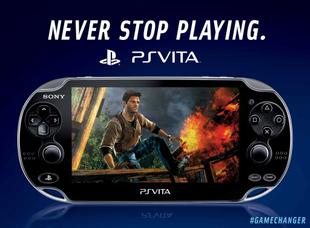
This was Sony's new baby and it had the full financial backing of its parent company along with strong support from third-party developers, but what was going wrong?
With a decade of hindsight behind us, we've come to a conclusion: it was a case of wrong place, wrong time.
In the context of the February 2012 launch in Europe, the after-effects of the 2008 banking crisis were being acutely felt.
From an Irish standpoint, February 2012 was an especially grim time.
The lingering effects from the economic crash in 2008 were starting to be acutely felt by the average Irish consumer.
Per the Central Statistics Office, unemployment rates in Ireland peaked at 15.1% in the same month the PlayStation Vita was launched.
To put it in a consumer context, why would you spend the bones of €400 on a new gaming device when there were more pressing financial matters?
The launch price for the Vita in Ireland was €250 for the basic Wi-Fi model, and €299 for the model with 3G capability.
Add in some launch titles, the proprietary memory cards (more on those later) and you're looking at €400 spent before you've even opened the box.
€400 could buy you a smartphone, which was undergoing a revolution at the time.
2010 and 2011 are viewed by industry analysts as the golden age of the smartphone boom, with 2011 alone seeing a 61% jump in the sales of smartphone sales worldwide.

Why would consumers bother paying a premium device for a new console when their phone could give them the same experience with games available at the fraction of the cost?
It isn't entirely accurate to pin the failings of the PlayStation Vita on the economic circumstances of the time, but it is certainly a factor.
The one factor that sealed the PlayStation Vita's fate? Sony didn't know how to make games for the thing.
Any Port In A Storm
Late 2012 saw the release of the promised third-party titles, including 'Call Of Duty Black Ops: Declassified', and 'Assassin's Creed 3: Liberation.
'Call Of Duty' was at a cultural peak in 2012, with 'Black Ops 2' shifting 30 million copies, so naturally, a brand-new title of the hit franchise generated a brief bout of excitement for the Vita.
There was one slight problem; the game was rubbish.
At the time, 'Call Of Duty' was known for its Hollywood-standard storytelling and epic campaigns, and 'Declassified' hit upon the bold idea not to tell any story at all.
The game tied into 'Black Ops 2' but instead of telling a blockbuster story, it instead presented bite-sized missions that could be finished over a cup of coffee.
As it turns out, the campaign mode could be finished in less than an hour.
So the campaign wasn't great, but not to worry, right? The game also launched with a multiplayer mode, and that is what people want in a 'Call Of Duty' game.
Once again, instead of the console-level quality players expected players got a supermarket own-brand version of the 'Call Of Duty' experience.
For readers who want to imagine the experience, picture Jimmy Page showing up to a school talent show to play Led Zeppelin songs that are off-tempo, out of key and out of tune.
What could have been a potential killer app for the PlayStation Vita turned into a bust, and after that, big titles from third-party developers became very few and far between.
In the same month however, EA Games actually put effort into a game and didn't release it in an unfinished state.
The PlayStation Vita port of 'Need For Speed: Most Wanted' boasted graphics that were essentially 1:1 with the home console counterparts, and still look impressive a decade on.

Therein lies the frustration with the PlayStation Vita; great games could be made for the device if the effort was put in.
Possibly due to the 'Call Of Duty' debacle, a proposed 'Bioshock' game for the PS Vita was put on ice, and first and third-party support for the console started to dry up.
The PlayStation Vita was on life support less than a year into its lifespan.
Second Wind
2013 was something of an Annus Mirabilis for Sony.
The PlayStation 4 was launched in 2013, 'The Last Of Us' was released and their fierce rivals Microsoft and Nintendo endured a torrid year.
In the middle of all this, the PlayStation Vita saw a mini-revival that helped keep the console afloat.
The would-be blockbuster titles that dominated the first year of the consoles life dried up but the console developed a reputation as a versatile device for indie developers.
Sony quickly caught on, and offered indie developers strong support for the PlayStation Vita.
A port of the indie sensation 'Hotline Miami' was developed concurrently with the PlayStation 3 version, and a game like 'Hotline Miami' became the perfect device to play the ultra-violent hit title on.
Who doesn't love going on a synth-scored rampage while waiting for your dinner to cook?
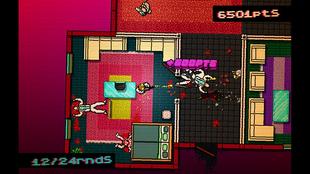
The indie renaissance on the PlayStation Vita became a happy accident for Sony, and using the Vita as a platform for smaller developers to showcase their work to the built-in PlayStation audience was a smart move by Sony.
The console also became known for it's ports of high-quality games.
The best-reviewed game on the system is a port of the JRPG 'Persona 4', and there's no better way to experience the quintessential JRPG than on the Vita.
2013's 'Killzone: Mercenary was an underrated entry in the franchise, with the game directed by Mathijs De Jonge.
Shortly afterwards, he was tapped to direct the latest original IP from Guerilla Games.
That IP became the wildly successful 'Horizon: Zero Dawn', and last week saw the launch of its sequel 'Horizon: Forbidden West'.
Of course, there is always the sense of "what could have been" with the console.
The console also received a boost thanks to the Remote Play feature on the PlayStation 4, with players able to pick up their gameplay sessions from the console and switch to the handheld experience.
This later became a selling point of the Nintendo Switch, and Nintendo did try the "pick up and play away from the TV" trick with the Wii U, but it was executed better by the Vita.
The Nearly Man
2014 was the last throw of the dice for the Vita as a major gaming console with big-budget titles.
'Borderlands 2' was a spirited attempt at replicating the console experience in handheld form but it was ultimately in vain.
The game simply proved to be too much for the console hardware, which was the final nail in the console's coffin from the perspective of major developers like Gearbox.
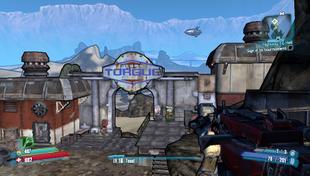
It is easy and somewhat reductive to say that the Vita was a failure because it didn't have the love and support needed from first and third-party developers, but one major factor held the console back.
Proprietary memory cards.
In simple terms, Sony didn't let players buy traditional memory cards to boost the storage of their console, instead, the console only accepted special memory cards made especially for the console.
There are some schools of thought as to why Sony chose this option, some point to piracy concerns, others point to performance issues, but Sony are a billion-Euro corporation at the end of the day.
Muneki Shimada, now a vice-president at Sony, told The Verge in 2011 that propietry memory was required to ensure stable performance and to act as a security measure.
While Sony can tout security and performance until the cows come home, but the decision was purely a monetary one, and it was to the detriment of the console.
To save costs, the console launched without internal storage for its core model, which necessitated buying the cards if players wanted to download content.
The cards started at 4GB and went all the way up to 32GB.
After a price cut in 2013, the most expensive model of memory card (the 32GB) went for roughly €70, and don't forget, it could only be used with this one console.
In 2022, €70 buys you an SD card with 256GB of storage.
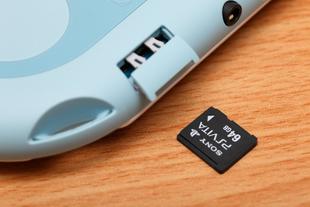
It doesn't take Bill Gates to figure out why the Vita wasn't successful - why would consumers bother spending the cost of a new console, some games and proprietary memory cards when the iPhone had all those features?
10 years later, the PlayStation Vita is an oddity in gaming history - it wasn't quite the smash hit that the 3DS was, nor was it an unmitigated failure like the Atari Lynx.
It predicted the handheld that gamers would come to love playing games on the go in the late 2010s, it served as a safe haven for indie developers, spawned some legitimately great games like 'Gravity Rush'.
On the flip side, it was a major missed opportunity for Sony to pose a challenge to Nintendo, and now their Japanese counterparts have a firm grip on the handheld market.
It was a console ahead of its time in some aspects, and a product that suffered a death by a thousand cuts in others.
Sony has no plans to revisit the handheld market anytime soon, but it was great fun while it lasted.
The PlayStation 3 overcame a rough launch to become the jewel in Sony's crown, but there was to be no 3rd act revival for their handheld console.
The Vita will live on as a fun curio in the annals of gaming history; the Aslan to the Nintendo Switch's U2.
